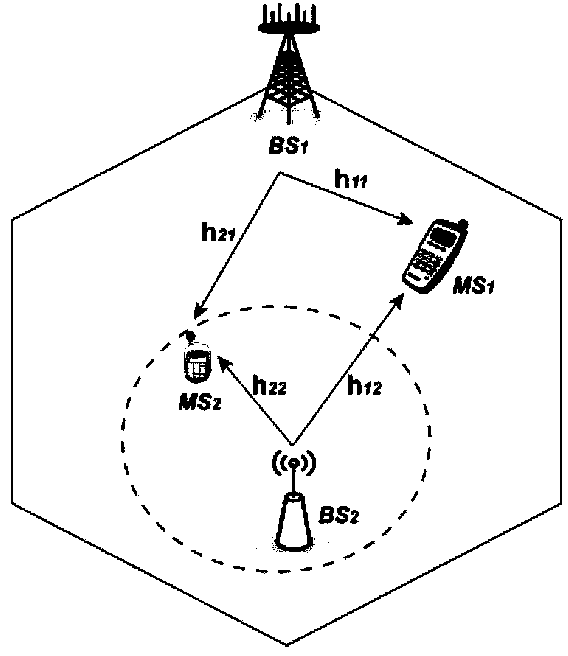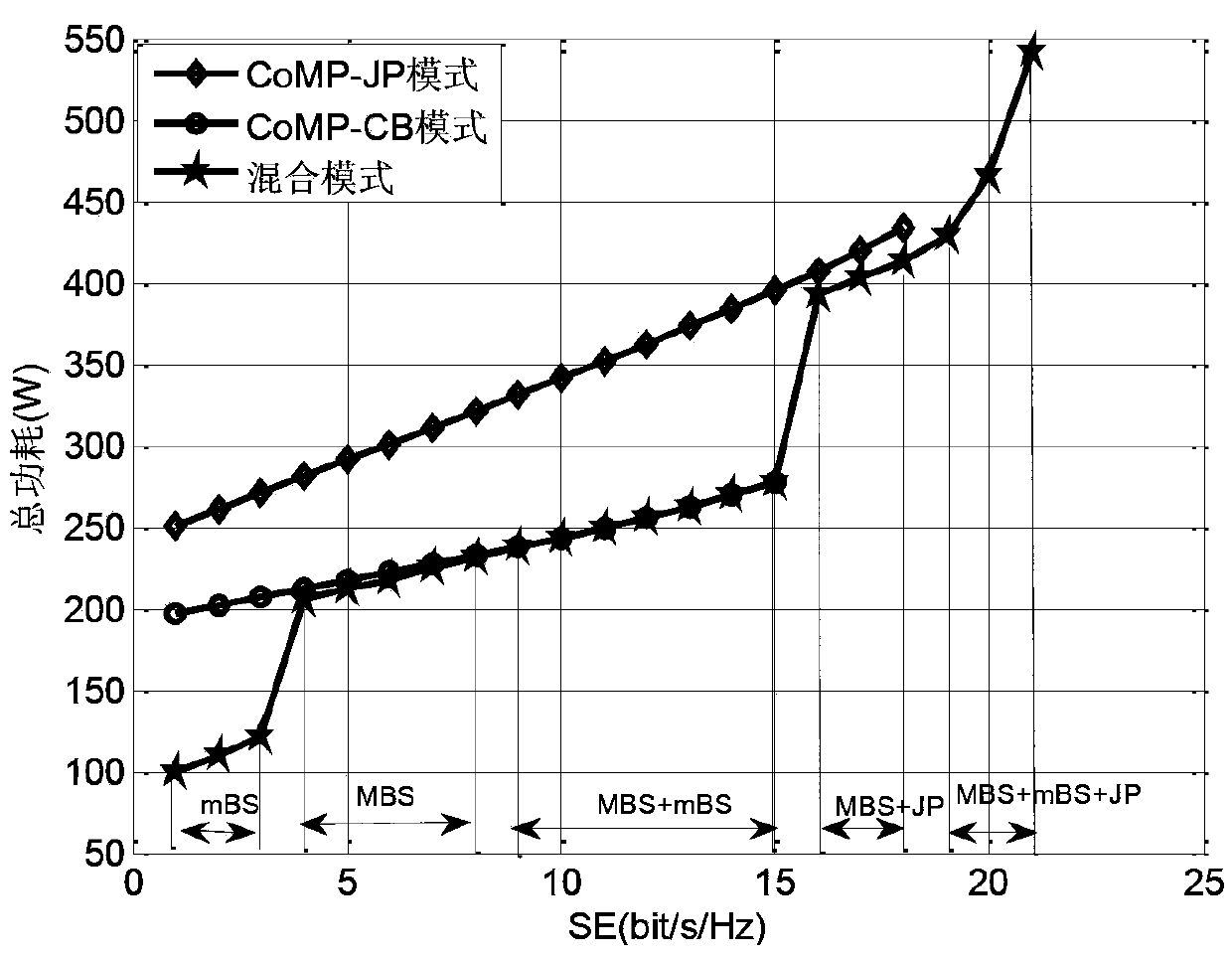Low-energy cooperation transmission method in heterogeneous network
A cooperative transmission and heterogeneous network technology, applied in the field of wireless communication, can solve the problems of reducing signal processing power consumption, high signal processing power consumption, increasing backbone network power consumption, etc., achieving low signal processing power consumption, low array gain, The effect of high power consumption in signal processing
- Summary
- Abstract
- Description
- Claims
- Application Information
AI Technical Summary
Problems solved by technology
Method used
Image
Examples
Embodiment
[0096] The present invention proposes a low-energy cooperative transmission method in a heterogeneous network, the flow chart of which is as follows figure 1 shown. Use matlab emulation platform in the embodiment, carry out emulation analysis to the performance of this method, emulation scene is as figure 2 shown in the figure, BS 1 Indicates the macro base station, BS 2 Indicates the micro base station, MS 1 Indicates users in the macro cell (ie, macro users), MS 2 Indicates the users in the micro cell (namely micro users), h 11 、h 21 Respectively represent the channel vectors from the macro base station to the macro user and micro user, h 12 、h 22 Indicate the channel vectors from the micro base station to the macro user and micro user respectively. The heterogeneous network includes 1 macro cell and 1 micro cell. The maximum transmit power of the macro base station is 46dBm and has 6 antennas. 4 antennas, each cell has 1 single-antenna user. The main steps are as ...
PUM
 Login to View More
Login to View More Abstract
Description
Claims
Application Information
 Login to View More
Login to View More - R&D
- Intellectual Property
- Life Sciences
- Materials
- Tech Scout
- Unparalleled Data Quality
- Higher Quality Content
- 60% Fewer Hallucinations
Browse by: Latest US Patents, China's latest patents, Technical Efficacy Thesaurus, Application Domain, Technology Topic, Popular Technical Reports.
© 2025 PatSnap. All rights reserved.Legal|Privacy policy|Modern Slavery Act Transparency Statement|Sitemap|About US| Contact US: help@patsnap.com



